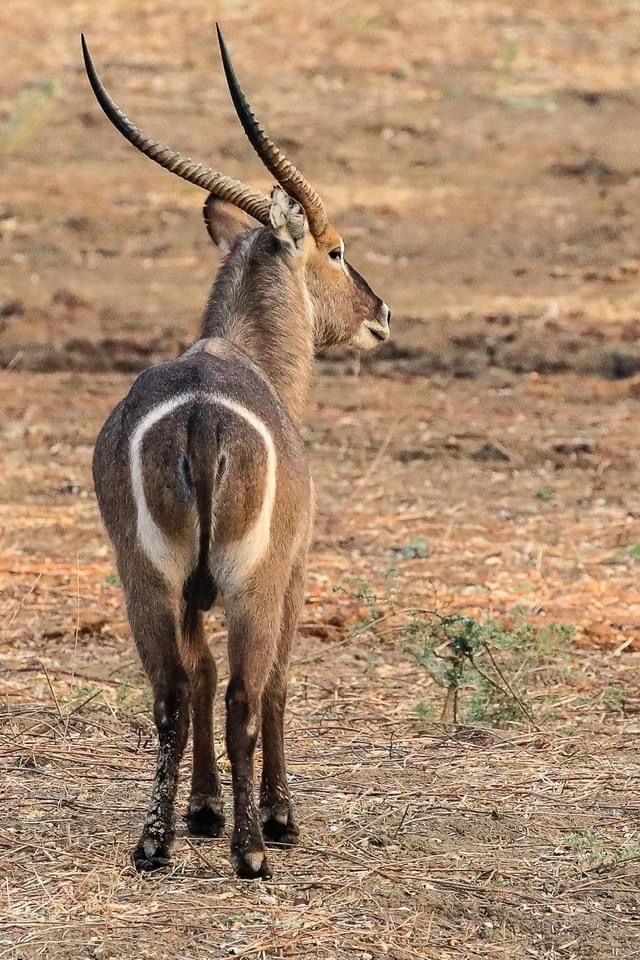 The white ring around the waterbuck’s hindquarters has led to many tales. A favorite is that they were the first animals to use the toilet on Noah’s Ark. The newly-installed toilet seats on the ark were still wet with paint and left a distinctive white ring on their rumps. Despite these bucks being a part of the ‘butt joke’, there are valid reasons for the white markings on their hindquarters. Flashes of color often scare off predators and act as a ‘follow me’ sign, helping other waterbucks flee when in danger.
The white ring around the waterbuck’s hindquarters has led to many tales. A favorite is that they were the first animals to use the toilet on Noah’s Ark. The newly-installed toilet seats on the ark were still wet with paint and left a distinctive white ring on their rumps. Despite these bucks being a part of the ‘butt joke’, there are valid reasons for the white markings on their hindquarters. Flashes of color often scare off predators and act as a ‘follow me’ sign, helping other waterbucks flee when in danger.
Waterbuck are sexually dimorphic, meaning males and females have external differences apart from their reproductive organs.
Males can be up to 25% larger than their female counterparts and they carry the defining feature of beautiful, long, ringed horns.
These horns curve backward and then forward and vary in length from 55 cm to 99 cm. The age of the bull determines the length of the horns.
Waterbuck horns will begin to develop at around 8 to 9 months and mark the young buck’s time to separate from the herd. Young males form bachelor groups remain together until they mature and move on to make their own herd. Waterbucks’ diets are rich in protein and other nutrients. This includes coarse grasses that are seldom eaten by other plain animals and long sweet grasses like buffalo grass.
During the dry season, they supplement their diet by browsing on leaves from shrubs and certain trees, such as the Sweet thorn (Vachellia karroo). At times, you will find them shoulder-deep in water, eating roots and other aquatic plants.
They also enjoy browsing on certain fruits, especially the marula fruit during the ripe season. These antelope typically eat in the mornings and late afternoons and chew cud for the remainder of the day.
These herbivorous animals have remarkably high water requirements. They need to drink often, which is one reason why they remain close to permanent water points at all times. You’ll often find them nestled in reed beds near rivers and dams, or on floodplains.
Common waterbuck are social animals. They live in herds or groups of up to 12. Male antelopes are dominant over a certain territory, and their herd consists of females, young bachelors, and calves.
The herds are constantly changing, as individuals can join or leave at any time, provided there aren’t other males looking to dominate the territory.
When a bachelor threatens the territory of a herd leader, the dominant male will posture aggressively and even start a fight if necessary. These fights can be fatal, as the waterbuck uses its long, strong horns in combat.
Typically, a waterbuck will live up to 18 years in the wild. In general, 12-15 years is a good life for a wild waterbuck. @GodfreytheGuide #Antelope #https://www.instagram.com/p/CQo-ZP4gIwZ/?utm_medium=copy_link
Comments
0